As much music video as movie, Edgar Wright’s Baby Driver is part symphony, part sonic assault. The music plays wall-to-wall in this giddy, extravagant thriller about a gifted getaway driver who’s paralyzed unless he’s blasting funk and soul into his ears by way of white earbuds hooked up to a rotation of oh-so-retro iPods. Stricken with tinnitus, the oddly monikered Baby (Ansel Elgort) can only concentrate when he’s listening to classic jams, the better to drown out the incessant humming. This fusion of underworld pulp and musical obsessiveness is Baby Driver’s raison d’être; there have been countless films about bank robbers and quite a few about wheelmen, but this is surely the first where the driver snaps at his cohorts to wait before commencing a heist because he needs to restart a song to regain his rhythm.
Baby’s condition is in part a clever conceit, an excuse for Wright—the pop-culture connoisseur who once interrupted a life-or-death action sequence in Shaun of the Dead while his characters discussed which old vinyl records were worth saving—to cram the film’s soundtrack with his favorite tunes, ranging from The Beach Boys to Queen to Young MC. Yet it’s also possible to view Baby’s affliction as a surrogate for his director’s own peculiar anxiety. A supremely capable and distinctive filmmaker, Wright here piles one flourish on top of another so that Baby Driver eventually reaches vertiginous heights, threatening to topple under its own weight of cinematic cool. It’s a blast, but it can also feel like style for its own sake, Wright working so feverishly to keep you entertained that he seems terrified of that inevitable moment when the music stops.
Still, there are far worse artistic sins than supplying your audience with a surfeit of fun. Baby Driver broadcasts its commitment to puckish exuberance in its opening sequence, when Baby parks his cherry-red sedan alongside a sunny Atlanta sidewalk and stays put as his partners—including the slick Buddy (Jon Hamm), his slicker wife Darling (Eiza González), and the hotheaded Griff (Jon Bernthal)—spill out of the car and stream into a bank, armed with bandanas and semi-automatics. They’re the ones perpetrating the crime, but Wright keeps his camera trained on Baby, and while the tension-goosing ploy of staying with the driver as the thieving occurs off-screen is nothing new (Robert Zemeckis did it just last year in Allied), Wright isn’t interested in building suspense. Instead, he just watches as Baby—completely unconcerned that he’s currently participating in a felony—starts grooving and lip-synching to the Jon Spencer Blues Explosion hit “Bellbottoms”, his appreciative gusto instantly transferring to you, the admiring viewer.
You’ll admire plenty more in Baby Driver, not least the high-octane car chase that immediately follows. Wright’s restless energy can get the better of him—he cuts a bit too frequently during his set pieces, hampering our understanding of the characters’ relative geography—but he nevertheless paces his chase scenes well, punctuating the persistent vroom-vroom of cars streaming down roadways with magnificent bursts of vehicular derring-do. Sliding his Subaru between a dumpster and a garbage truck in a narrow alleyway is one thing, but when Baby evades detection from a police helicopter by first darting into a tunnel, then brilliantly trading places with an identically colored mid-size, you’re liable to jump up and cheer.
There’s a weird dissonance between Baby Driver’s spirit of rambunctious joy and its overarching narrative, which essentially functions as a classic “one last job” movie. Baby’s handler is Doc (Kevin Spacey, a steadying elder influence in this universe of youthful zeal), the plotter of the film’s various heists who exerts leverage over his charge based on a past indiscretion. Although Baby seems entirely at home behind the wheel, he nonetheless wishes to flee this life of crime, an urge that intensifies once he meets Debora (Lily James, showcasing a reasonably convincing Southern accent), a wide-eyed waitress who finds him mysterious and who longs to hit the open road. Their ensuing romance isn’t especially credible, but it’s animated by a wholesome sweetness—and a shared love of music—that’s in keeping with the movie’s overall joie de vivre.
Baby’s burgeoning desire to escape with Debora helps sharpen the film’s stakes, but it also strangely contributes to its gradual wear and tear. As Baby Driver progresses, it slowly slides from gleeful to gritty, turning from a delightful lark into a hard-boiled, surprisingly violent crime picture. This transition is presaged by the arrival of Jamie Foxx as Bats, an erratic wildcard with a taste for bloodshed; as likely to stick up a diner as to settle the bill, Bats encapsulates his worldview when he tells Buddy, “You rob to support a drug habit, I do drugs to support a robbery habit.”
That’s a clever line, and it’s a pleasure to watch Foxx sink his teeth into the part. Yet the character of Bats also reveals Wright’s struggle at reconciling the movie’s effervescent buoyancy with its escalating body count. Baby Driver is too vibrant and idiosyncratic to feel like an imitation of anything, but it readily invites comparisons to Drive, Nicolas Winding Refn’s breathtaking saga of glitzy amorality in a nostalgia-drenched Los Angeles. Coastal location aside, the key difference is that, where Refn thrives in darkness (often disturbingly so), Wright’s cheery sensibility makes his forays into edginess feel forced. The genius of his masterwork, Scott Pilgrim vs. the World, was that it couched its zany fight scenes in the context of a commentary on recognizably human relationships and their attendant baggage. In a sense, Baby Driver attempts to do something similar—Baby is fighting for true love, after all—but it often feels like the opposite, with Baby’s putative affection for Debora serving as mere scaffolding for the film’s relentless vehicular mayhem and grisly personal carnage.
Some of the blame lies with Elgort. Best known for winningly romancing Shailene Woodley in The Fault in Our Stars (and secondarily for playing her brother in the Divergent films), the smooth-cheeked actor certainly looks the part, and he nicely captures both Baby’s quirky passion and his social aloofness. The problem arises when he tries to turn down the boyishness and throttle up the aggression; he just lacks the gravitas to smolder with rage, especially when matched against fire-breathers like Hamm and Foxx. One of the crucial elements of Wright’s second-best movie, The World’s End, was the way Simon Pegg’s performance fluidly shifted from mania to bafflement to genuine anguish. Elgort is an appealing young actor, but although he flashes chic and charm—part of me wants the movie to be called “The Fault in Our Cars”—he lacks the necessary range once he takes off his sunglasses.
This is hardly a fatal flaw. The supporting performances are all on point: James mingles earnest longing with doe-eyed vulnerability, Spacey cuts his ruthless professionalism with a twinge of melancholy, and Hamm and Foxx engage in a robust scenery-chewing contest. And even if Baby Driver can occasionally feel like shtick, it is decidedly the work of a director with a personal vision, and Wright torques up its familiar storyline with undeniable panache. This movie is energetic, stylish, and often funny (a misunderstanding regarding the purchase of “Michael Myers masks” is a howler). But it’s also repetitive, like an exhilarating guitar solo that loops over and over. As the cars continually screech and ram and burn rubber—in parking lots and garages, down highways and through underpasses—Baby Driver can’t help but run out of gas. No matter how many expertly chosen pop songs blare from Baby’s iPod, after awhile, it’s hard to distinguish the music from the noise.
Jeremy Beck is the editor-in-chief of MovieManifesto. He watches more movies and television than he probably should.

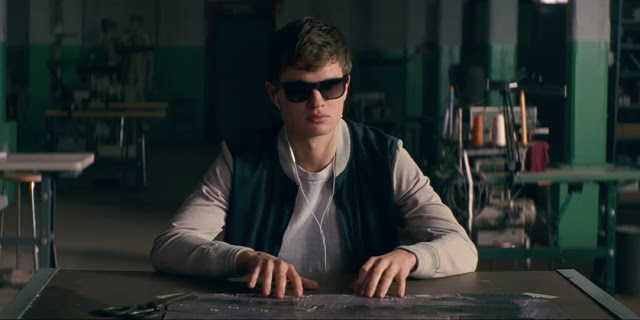
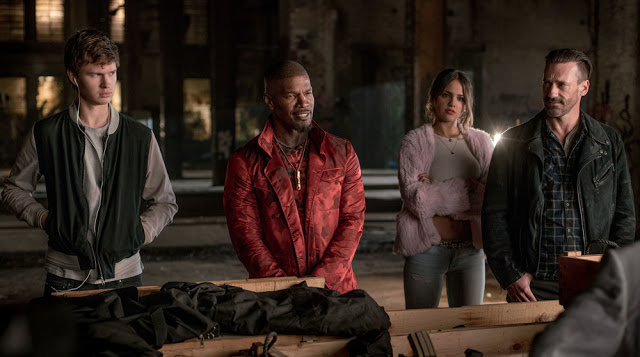
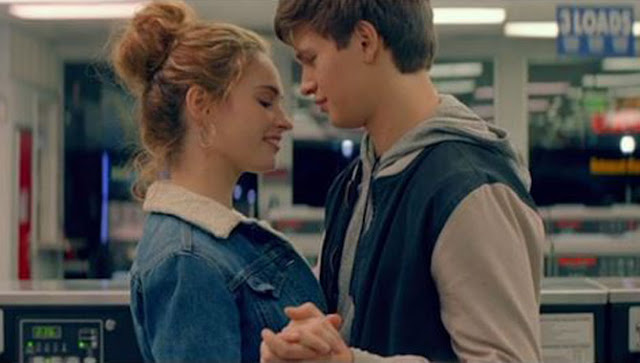
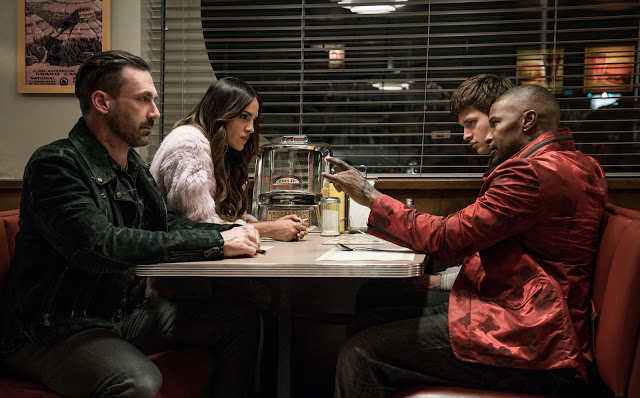
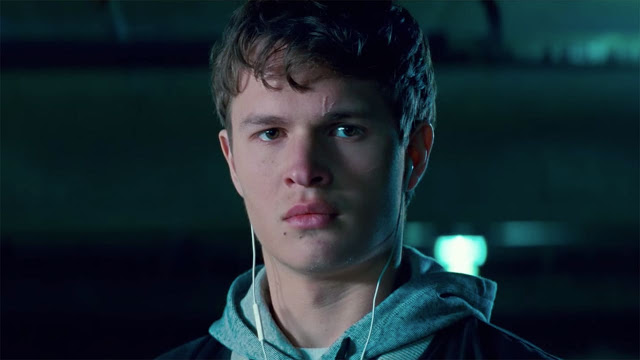
Even when I disagree with your opinions, I marvel at your sentence structure, word choice and wit. Awesome piece!
Thanks! I am clearly in the minority on this one (despite mostly liking the movie).